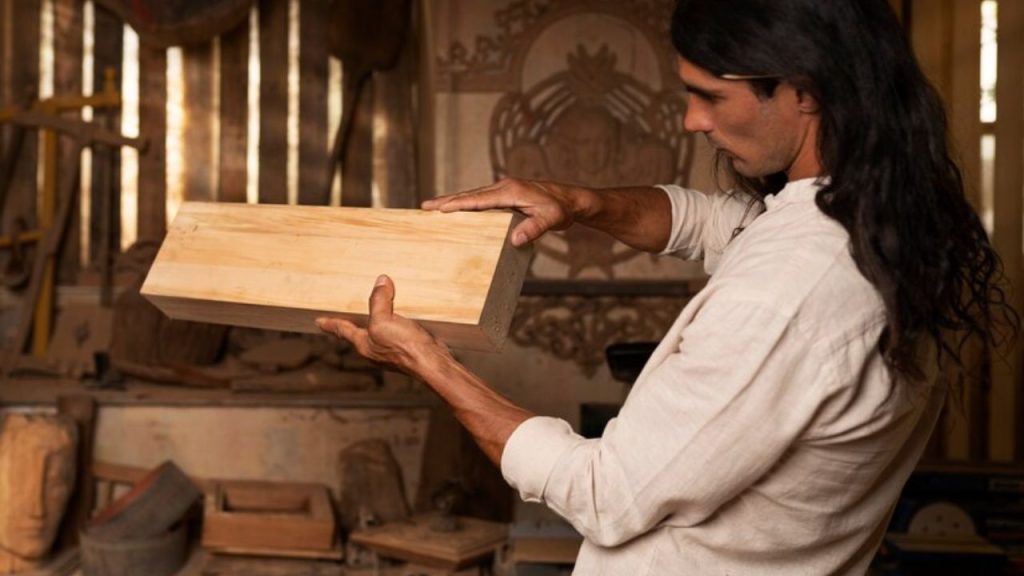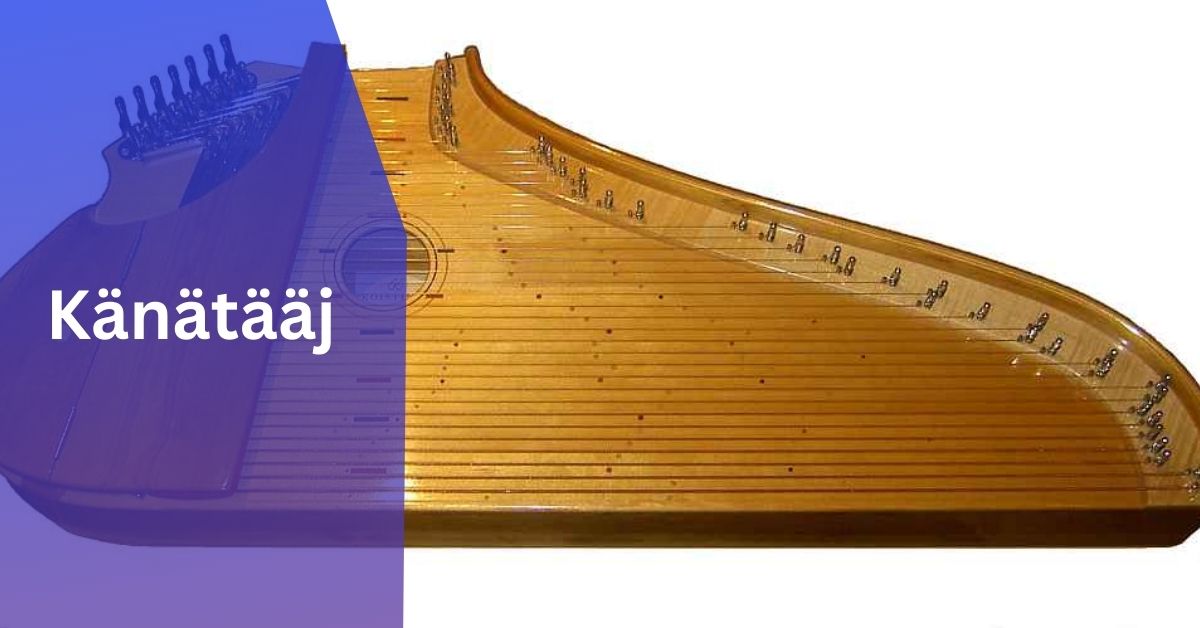In the heart of Finland’s lush, verdant forests, where the sunlight weaves intricate patterns through the dense canopy, a mesmerizing world unfolds. Welcome to the world of Känätääj, a rich tradition of Finnish folk music that enchants with its ancient melodies and captivating beauty.
This article explores the depths of Känätääj, its origins, significance, and the cultural heritage it represents, offering insights into how this tradition continues to inspire and captivate.
What Is Känätääj?
Känätääj is a traditional Finnish folk music genre that embodies the essence of Finland’s cultural and historical landscape. At its core, Känätääj is defined by its use of the Kantele, a traditional Finnish string instrument known for its ethereal and haunting sound. This music tradition is not just about melodies; it’s a reflection of the Finnish way of life, blending folklore, nature, and spirituality into a unique musical experience.
The Origins Of Känätääj:

Ancient Roots in Finnish History
The origins of Känätääj are deeply intertwined with Finland’s history and mythology. Rooted in ancient Finnish pagan traditions, Känätääj has been passed down through generations, preserving stories, legends, and rituals. The Kantele, the primary instrument used in Känätääj, dates back to the early Finnish Iron Age, making it one of the oldest musical instruments in the region.
Mythological Connections
In Finnish mythology, the Kantele is often associated with the mythical hero Väinämöinen, a central figure in the Finnish national epic, the Kalevala. According to legend, Väinämöinen used the Kantele to create music that could influence nature and the cosmos, a testament to the instrument’s profound cultural and spiritual significance.
The Kantele: Heart Of Känätääj
Instrumental Beauty and Craftsmanship
The Kantele is a traditional Finnish zither-like instrument with a distinctive sound. It typically has five to thirty strings and is played by plucking or strumming. The craftsmanship of the Kantele is an art in itself, with each instrument often handcrafted from wood and decorated with intricate designs. The beauty of the Kantele lies in its ability to produce haunting, melodic tones that evoke the essence of the Finnish landscape.
The Role of the Kantele in Känätääj
In Känätääj, the Kantele is more than just a musical instrument; it’s a vessel of cultural expression. The melodies played on the Kantele often reflect the rhythms of nature, the changing seasons, and the spiritual beliefs of the Finnish people. Through its music, the Kantele brings to life the stories and traditions of Finland’s past, creating a bridge between the ancient and the modern.
Also Read: Geekzilla Radio – Join Geekzilla Radio Fun!
The Music Of Känätääj:
Känätääj’s music is characterized by its ethereal quality and complex layers. The melodies played on the Kantele are often intertwined with nature’s sounds, reflecting the serene yet mysterious landscape of Finland. These melodies can evoke a range of emotions, from tranquility to deep reflection, mirroring the varied experiences of Finnish life and the natural world.
Traditional Songs and Themes
Traditional Känätääj songs often revolve around themes of nature, mythology, and daily life. They tell stories of ancient gods, mythical creatures, and the changing seasons. The music serves as a narrative tool, preserving and transmitting Finnish folklore across generations. Each song is a piece of living history, offering insights into the values and beliefs of past Finnish societies.
Educational Programs Of Känätääj:
Educational programs in Finland frequently include Känätääj as part of their curriculum. Students learn about the history of the Kantele, its construction, and its role in Finnish folklore. These programs aim to preserve the tradition by passing it on to younger generations, ensuring its continuation and appreciation.
The Cultural Significance Of Känätääj:

A Reflection of Finnish Identity
Känätääj is a vital part of Finnish cultural identity. It embodies the connection between the Finnish people and their natural environment, celebrating the beauty of the forests, lakes, and landscapes that define the country. The music of Känätääj is a tribute to the Finnish way of life, highlighting the harmony between humanity and nature.
Preservation and Revival
In recent years, there has been a renewed interest in preserving and reviving Känätääj. Modern Finnish musicians and folk enthusiasts are working to ensure that this ancient tradition continues to thrive. By incorporating traditional elements into contemporary music and educational programs, they are ensuring that Känätääj remains a vibrant part of Finland’s cultural heritage.
Festivals And Events Of Känätääj:
Känätääj is celebrated through various festivals and events across Finland. These gatherings offer opportunities to experience live performances, learn about the history of the Kantele, and engage with Finnish folk traditions. Attendees can immerse themselves in the enchanting world of Känätääj, gaining a deeper appreciation for its significance.
Modern Interpretations Of Känätääj:
Today, Känätääj is not confined to traditional settings. Modern musicians are exploring new ways to incorporate the Kantele into diverse musical genres, creating innovative blends of traditional and contemporary sounds. This evolution helps keep Känätääj relevant and accessible to new audiences, both in Finland and beyond.
Also Read: Leah Funke Missing Miami Florida – Support Leah’s Safe Return!
FAQ’s:
1. What is Känätääj?
Känätääj is a traditional Finnish folk music genre centered around the Kantele, a string instrument known for its haunting melodies. It reflects Finnish cultural and historical traditions.
2. What is Kantele?
The Kantele is a traditional Finnish string instrument similar to a zither. It has a distinctive sound and is used in Känätääj to produce melodic and ethereal music.
3. How old is the Kantele?
The Kantele dates back to the early Finnish Iron Age, making it one of the oldest musical instruments in Finland.
4. Who is Väinämöinen?
Väinämöinen is a mythical hero in Finnish folklore, known for his association with the Kantele in the Finnish epic, the Kalevala. He is said to have used the Kantele to influence nature and the cosmos.
5. How does Känätääj reflect Finnish culture?
Känätääj reflects Finnish culture by celebrating the connection between people and nature. Its music captures the beauty of Finland’s landscapes and the spiritual beliefs of its people.
6. What role does Känätääj play in modern Finland?
Känätääj plays a role in preserving Finnish cultural heritage. It is celebrated through festivals, performances, and modern interpretations that keep the tradition alive.
7. How can I experience Känätääj today?
You can experience Känätääj by attending Finnish folk music festivals, listening to performances, and exploring modern interpretations of the tradition.
8. Are there any famous Kantele musicians?
Yes, there are several renowned Kantele musicians in Finland who have contributed to the revival and popularization of Känätääj. They blend traditional and contemporary styles to reach new audiences.
9. How can I learn to play the Kantele?
You can learn to play the Kantele through music schools, workshops, and online resources dedicated to Finnish folk music. Many communities also offer traditional music lessons.
10. Why is preserving Känätääj important?
Preserving Känätääj is important because it helps maintain a vital part of Finnish cultural heritage. It ensures that future generations can connect with and appreciate the rich traditions of Finnish folk music.
Conclusion:
Känätääj is more than just a form of music; it’s a living tradition that encapsulates the rich cultural heritage of Finland. Through the haunting melodies of the Kantele and the stories woven into its music, Känätääj offers a glimpse into the soul of Finnish folklore and spirituality. As we explore and embrace this enchanting tradition, we connect with a piece of Finland’s past and celebrate the timeless beauty of its musical heritage.
Read More:








